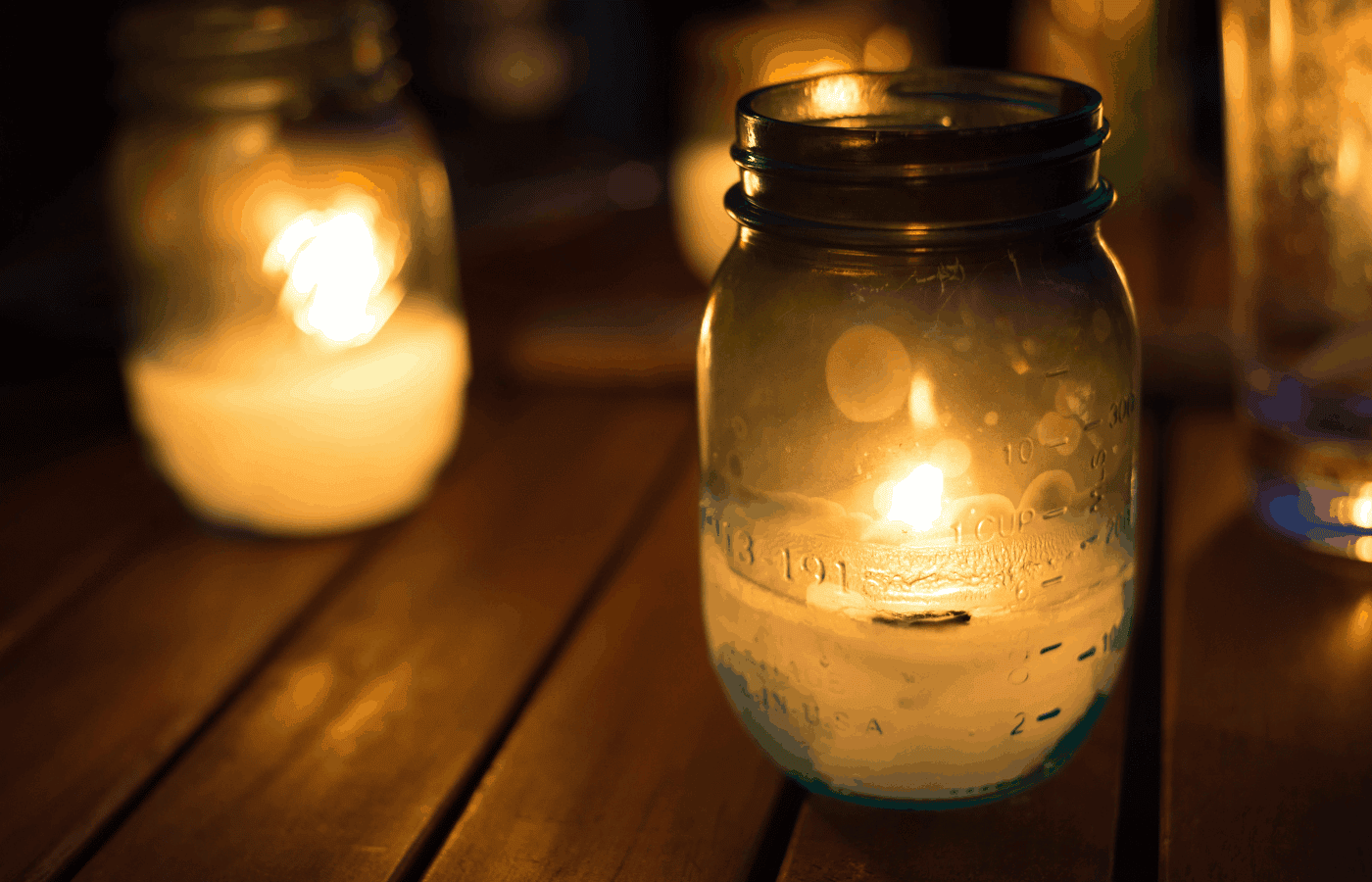Candles are a comforting presence in any home, adding ambiance and lovely fragrances to any environment. Unfortunately, they do not last forever. As you burn a candle, you may wonder why the wax evaporates.
Candle wax evaporates because the heat from the flame causes the wax to melt and be soaked up by the wick. Once the wick has soaked up the wax, the melted wax in the wick evaporates and burns, which allows the candle flame to continue burning.
Candles are carefully designed so that their wax gives power to the wick so that it can slowly continue burning, releasing light and often a fragrance. Keep reading to learn more about the evaporation process, as well as how long it takes for a candle to burn.
Why Does the Wax Disappear in a Candle?
Although wax may look like a long-lasting substance, it is not. Wax is an essential part of the candle, and the reason why it disappears is that it melts and is evaporated through the wick.
Every solid substance has a melting point, or a temperature when it goes from being a solid to a liquid and eventually a gas. The candle’s flame increases the heat within the candle so that the wax reaches this temperature. It then undergoes a chemical reaction that causes it to turn into a liquid.
This liquid is absorbed by the soft wick in the center of the candle. As it approaches the flame, the wax burns and is further heated, which causes it to evaporate.
At What Temperature Does Wax Melt?
Wax can melt at different temperatures, but it most commonly melts somewhere between 80 and 180 degrees Fahrenheit. The following are some characteristics that can impact how long it takes for the wax to melt:
- The type of wax
- The density of wax
- Substances added to the wax
Pure beeswax is known as the type of wax with the highest melting point. This means it needs to be heated up to a higher temperature than other types of wax before it begins to melt.
To check the current price and availability of Candle Wax, click here to view the selection on Amazon.
What Does It Mean When Candle Wax Evaporates?
You may have heard the term “evaporation” in science classes or on television, but what does it actually mean? Simply put, when a material such as candle wax evaporates, it turns from a liquid into a vapor, which is a substance diffused into the air.
There are three states of matter. These are:
- Solid
- Liquid
- Gas (vapor)
All substances can be in one of these three states at any time. When heat is added to a substance, it moves from one phase to the next.
An example of this is water. When it is solid, it is an ice cube. However, when you add heat, it melts and becomes a liquid. If you heat it further, it begins to disappear, which is evaporation.
This phenomenon takes place in wax, too. When you burn a candle, you can witness all three states of matter taking place.
What Causes My Candle to Smell Good?
When you burn a scented candle, a fragrance is often released. This is because when you melt the wax, molecules are emitted as a result of the heat. These molecules can carry the added fragrance and will scent a room as they disperse.
Although candles can smell nice even when they are not burning, you will probably not notice their scent in a room until you begin to burn them. This is because the particles are emitted faster when heat is added. The smell of your candle comes both from the melting and evaporation processes.
How Long Does Candle Wax Take To Evaporate?
Candle wax can evaporate at different speeds depending on the melting point of the wax and the size of the candle.
If you look at the bottom of the candle or the label, you might see something called the “burn time.” This means how long it takes to use up, or evaporate, your entire candle. Burn time is usually most impacted by what kind of wax your candle is made from.
What Kind of Wax Evaporates Fastest?
Soft wax evaporates faster because it has a lower melting point and therefore moves through the states of matter much more quickly than hard wax. Soft wax candles will burn much more quickly than candles made from hard wax.
The following are popular types of candle wax and their typical speed of burning:
- Parrafin Wax is a soft type of wax and will typically burn quickly.
- Soy Wax is a medium-hardness wax that has an intermediate burn speed.
- Beeswax is considered one of the hardest types of wax that has a slow burn speed.
When you are purchasing candles, it can be helpful to look at the burn time listed or the type of wax the candle is made from. If it is a short burn time or a soft wax, you will know that the wax will evaporate at a faster speed.
Keep in mind that if you are buying or making candles, hard wax will often be more expensive. Hard wax is typically a higher-quality wax, and it guarantees more burn time for its size than softer and less expensive types of wax.
Final Thoughts
Beyond just being beautiful to look at, candles are scientifically interesting as well. One of the most interesting things about candles is the way they use evaporating wax to power their own flame and continue burning wax.
Evaporation is an interesting process and can impact almost all physical substances given the right temperature. Fortunately, candles do not require that much heat to melt and evaporate, releasing their fragrance into the air.
If you are a candle aficionado, pay attention to the burn time or type of wax that your candle is made from. This is usually indicative of how long your candle will take to evaporate. Knowing the science behind how candles burn can make it that much easier to make an informed decision about what type of candle to buy.


